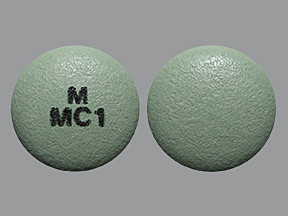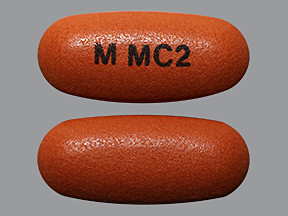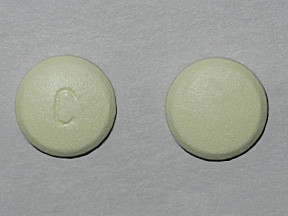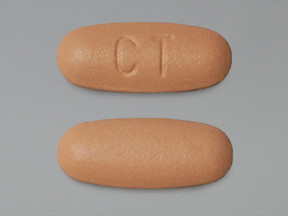MYCOPHENOLATE SODIUM DELAYED-RELEASE TABLET - ORAL
PHONETIC PRONUNCIATION: (MYE-koe-FEN-oh-late SOE-dee-um)
COMMON BRAND NAME(S): Myfortic
GENERIC NAME(S): mycophenolate sodium
Uses
USES: Mycophenolate is used in combination with other medications to keep your body from attacking and rejecting your transplanted kidney. It belongs to a class of medications called immunosuppressants. It works by weakening your body's defense system (immune system) to help your body accept the new kidney as if it were your own.
How to use MYCOPHENOLATE SODIUM DELAYED-RELEASE TABLET - ORAL
HOW TO USE: Read the Medication Guide provided by your pharmacist before you start taking mycophenolate and each time you get a refill. If you have any questions, ask your doctor or pharmacist. Take this medication by mouth as directed by your doctor, usually twice daily on an empty stomach, 1 hour before or 2 hours after meals. Swallow the tablet whole. Do not crush, chew, or break the tablet. Doing so may prevent your body from fully absorbing the drug. Avoid handling or inhaling any dust from the tablets. Avoid direct contact with the skin or eyes. If contact occurs, wash the affected skin area well with soap and water or rinse your eyes with plain water. Consult your pharmacist for details. Since this drug can be absorbed through the skin and lungs and may harm an unborn baby, women who are pregnant or who may become pregnant should not handle this medication or breathe the dust from the tablets. The dosage is based on your medical condition and response to treatment. In children, it is also based on body size. Use this medication regularly to get the most benefit from it. To help you remember, take it at the same times each day. It is very important to continue taking this medication even if you feel well. Do not stop taking mycophenolate without first talking to your doctor. Certain products may make it harder for your body to absorb mycophenolate if they are taken at the same time. Do not take this medication at the same time as antacids containing aluminum and/or magnesium, cholestyramine, colestipol, or calcium-free phosphate binders (such as aluminum products, lanthanum, sevelamer). Ask your pharmacist for more details. Do not change brands or forms of mycophenolate unless directed by your doctor.
Side Effects
Precautions
Interactions
Overdose
Images

- color
- sage green
- shape
- round
- imprint
- M MC1

- color
- reddish-orange
- shape
- oblong
- imprint
- M MC2

- color
- lime green
- shape
- round
- imprint
- M3

- color
- sage green
- shape
- round
- imprint
- M MC1

- color
- sage green
- shape
- round
- imprint
- M MC1

- color
- reddish-orange
- shape
- oblong
- imprint
- M MC2
Reviews
Faq for MYCOPHENOLATE SODIUM DELAYED-RELEASE TABLET - ORAL
Mycophenolate Sodium Delayed-Release Tablet is commonly used to prevent rejection of organ transplants, such as kidney, liver, or heart transplants.
It works by suppressing the body's immune system to prevent it from attacking and rejecting the transplanted organ.
Common side effects may include diarrhea, nausea, stomach upset, vomiting, headaches, and difficulty sleeping.
It is usually taken twice daily, on an empty stomach, at least one hour before or two hours after eating. Follow your doctor's instructions and do not crush or chew the tablets.
It is important to consult with your doctor or pharmacist before taking any other medications, including over-the-counter drugs, herbal supplements, or vitamins, as they may interact with Mycophenolate Sodium.
It is generally recommended to avoid or limit alcohol consumption while taking Mycophenolate Sodium, as alcohol may increase the risk of side effects.
It is crucial to discuss family planning options with your doctor before starting this medication. Mycophenolate Sodium can harm an unborn baby, and it is not recommended while breastfeeding.
The duration of treatment depends on your specific medical condition and transplant type. In most cases, it is necessary to take this medication for the rest of your life to prevent transplant rejection.
If you miss a dose, take it as soon as you remember. However, if it is close to the time for your next dose, skip the missed dose and resume your regular dosing schedule. Do not double the dose to catch up.
Warning
WARNING: Mycophenolate may lower your ability to fight infections. This may make you more likely to get a serious (rarely fatal) infection or make any infection you have worse. Tell your doctor right away if you have any signs of infection (such as sore throat that doesn't go away, fever, chills, cough, burning/painful/urgent urination, change in the amount of urine). Mycophenolate may rarely cause cancer (such as lymphoma, skin cancer). Protect your skin from the sun. Avoid prolonged sun exposure, tanning booths, and sunlamps. Use a sunscreen and wear protective clothing when outdoors. Tell your doctor right away if you have any of the following symptoms of cancer: swollen glands, sudden weight loss, night sweats, change in appearance or size of moles, or unusual skin changes/growth. Mycophenolate may harm an unborn baby. When using mycophenolate, all males - and all women of childbearing age - must use reliable forms of birth control. See also Precautions section.
Disclaimer
IMPORTANT: HOW TO USE THIS INFORMATION: This is a summary and does NOT have all possible information about this product. This information does not assure that this product is safe, effective, or appropriate for you. This information is not individual medical advice and does not substitute for the advice of your health care professional. Always ask your health care professional for complete information about this product and your specific health needs.


No Reviews Yet